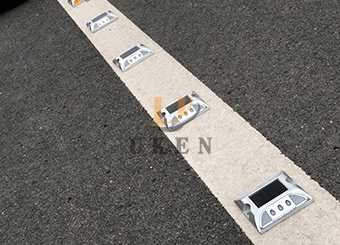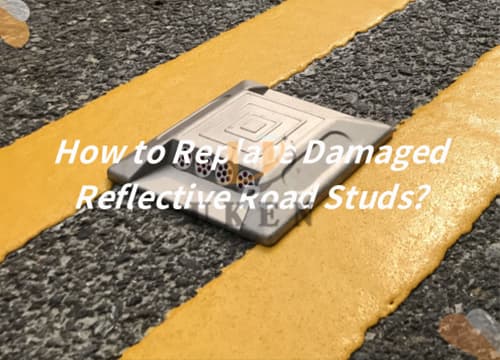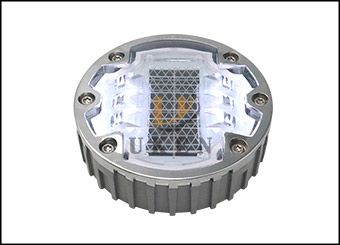The wattage of solar street light is rich and diverse, common 30W, 50W, 80W, 100W, 150W and so on. Different wattage determines the difference in lighting intensity and coverage.
Low wattage solar street lights, such as 30W – 50W products, are more suitable for courtyards, small pavements and other areas. They can provide soft and moderate lighting to create a warm atmosphere and meet the lighting needs of small spaces.
Medium to high wattage solar street lights, such as 80W – 150W and above, show their advantages in large places such as city roads and squares. These places have a large flow of people and open space, and need sufficient and extensive lighting, which can be met by medium and high wattage street lamps.
Lighting requirements: The type of road is key to determining lighting requirements. Highway speed, traffic flow, drivers need to be able to see the road conditions at a distance, so the need for high brightness, wide coverage of the lighting, high wattage solar street lamps are more appropriate. The community road, mainly serving the residents daily travelling, lighting needs are relatively low, low wattage street light is enough to meet.
Installation environment: lighting conditions have a great influence on the choice of wattage. In areas with sufficient light, solar panels can fully absorb solar energy, and the wattage can be flexibly selected according to the actual lighting needs. However, in areas with insufficient light, in order to ensure sufficient lighting hours and brightness at night, it may be necessary to choose a high wattage solar street light to store more electricity.
Budget Consideration: Generally speaking, high wattage solar street lights cost more, which is not only reflected in the purchase price of the equipment, but also the installation and subsequent maintenance costs are relatively high. If the budget is limited, you need to carefully weigh the relationship between wattage and cost, and choose cost-effective products under the premise of meeting lighting needs.
Lighting effect: 100W solar street light has a large luminous volume, which can effectively illuminate a large area. In the city’s main and secondary roads, it can provide clear, uniform lighting, so that drivers and pedestrians can clearly see the road conditions, to protect travel safety. In large car parks, its sufficient lighting allows car owners to easily find parking spaces, while also enhancing the safety of the car park.
Wide range of applicable scenes: for commercial streets with high brightness requirements, 100W solar street light can create a bright and prosperous atmosphere to attract customers. In industrial parks, it can meet the lighting needs of night production operations. Campus and parks and other recreational areas to install 100W solar street lights, can enhance the safety and comfort at night, convenient for teachers and students night activities as well as public night walk.
Cost-effective analysis: From the perspective of long-term use, although the initial cost of 100W solar street light is relatively high, its excellent lighting effect can reduce the potential risks and losses caused by insufficient lighting. Moreover, it has a long service life and can continue to work for many years under normal maintenance. At the same time, due to its efficient lighting, relatively reduce the maintenance frequency, a combination of these factors, 100W solar street light in the lighting effect, service life and maintenance costs under the comprehensive consideration, has a high cost-effective.
The working process of solar street light is full of technology. During the day, the solar panel is like a diligent ‘energy collector’, which absorbs sunlight and uses the photoelectric effect to convert solar energy into electricity, which is stored in the battery.
When night falls, the surrounding light becomes weak, the light control sensor is like the ‘eyes’ of the street lamp, keenly sensing the light changes, automatically open the circuit. At this time, the battery begins to play a role in powering the LED lights, which convert electrical energy into light energy to illuminate the surrounding environment. In this process, solar panels, batteries, LED lights, controllers and other components work closely together to ensure stable lighting at night.
Weather factors: Weather conditions have a significant impact on the night work of solar street lights. Continuous rainy, cloudy weather will make the solar panels receive a significant reduction in light, charging efficiency greatly reduced, resulting in battery power shortage. This will shorten the night lighting duration and reduce the brightness, which will bring inconvenience to road users and even affect road safety.
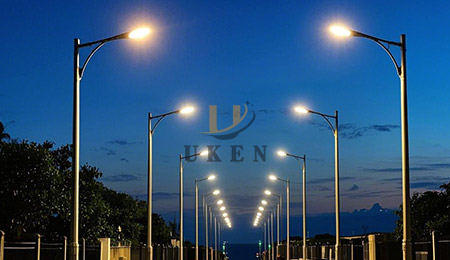
Battery performance: Battery is the energy source of solar street light working at night, and its performance is crucial. Battery capacity determines how much power is stored, and the number of charge/discharge times and life expectancy affects the length of time the battery can be used. If the battery ages and its capacity decreases, then the amount of electricity it can provide will decrease, thus shortening the lighting time.
Component quality: The quality of the solar street light’s components is directly related to the stability of the night work. High-quality solar panels can efficiently convert solar energy into electricity, high-efficiency LED lamps can more effectively convert electricity into light energy, and stable controllers can accurately regulate the charging and discharging process. Low-quality components are prone to failures, such as low conversion efficiency of solar panels, fast decaying brightness of LED lights, and malfunctioning of controllers, all of which will affect night work.
Reasonable configuration of components: according to the actual demand and local lighting conditions, carefully select the appropriate power of solar panels and large-capacity, long-life batteries. For example, in areas with sufficient light but high lighting demand, larger power solar panels and batteries with moderate capacity can be selected; in areas with insufficient light, larger-capacity batteries are needed to store power and ensure sufficient lighting at night.
Intelligent control system application: the use of intelligent controller is an effective means to enhance the reliability of solar street lights at night. Intelligent controller can automatically adjust the power of LED lights according to the battery power, light intensity and other factors. When the battery power is sufficient, the LED lights run at full power to provide sufficient lighting; when the battery power is low, it automatically reduces the power of the LED lights to prolong the lighting time and improve the energy utilisation efficiency.
Regular maintenance: It is necessary to establish a regular maintenance mechanism. Regularly clean the solar panel to ensure that its surface is free of dust and stains and can fully absorb solar energy. Check the performance of the battery, timely detection of battery capacity decline and other issues and deal with them. Test whether the module connection is firm to avoid failure due to loose connection. Through regular maintenance, discover and solve potential problems in time to ensure that the solar street light works normally at night.
How many hours do solar street lights need to charge?
The charging process of solar street light is based on advanced photoelectric conversion and power storage technology. Solar panel consists of multiple photovoltaic cells, when the sunlight irradiated on the solar panel, photons and photovoltaic cells in the semiconductor material interaction, resulting in electron – hole pairs, these electrons and holes in the electric field under the action of directional movement, the formation of electric current, so that the solar energy into electrical energy.
The charge controller plays the role of an ‘intelligent housekeeper’ in this process. It regulates the charging voltage and current to ensure that the battery is charged in a safe and efficient manner, while protecting it from overcharging and overdischarging. Overcharging will shorten the life of the battery, while over-discharging may damage the battery, and the existence of the charge controller effectively solves these problems.
Solar panel power: Solar panel power is one of the important factors affecting charging time. Higher power solar panels are able to generate more power under the same light conditions, and the charging speed will be faster. For example, a 100W solar panel will charge more efficiently and fully charge the battery faster than a 50W solar panel under the same light conditions.
Light intensity and duration: Light intensity and duration directly determine how much solar energy the solar panel receives. In areas with sufficient light and long sunshine hours, solar panels can charge quickly and the charging time is relatively short. The light conditions in different areas and seasons vary greatly, for example, in high latitude areas with short sunshine hours in winter, the charging time of solar street light will be extended.
Battery status: the state of the battery will also affect the charging time. New batteries or batteries with less power loss have high activity of internal chemicals, which can absorb electricity quickly and charge relatively fast. While aging batteries or batteries with a serious lack of power, the charging time will be extended, because the chemical reaction inside the battery is less efficient, and it takes a longer time to store electricity.
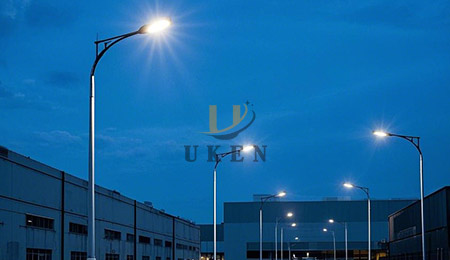
Ideal lighting conditions: in areas with sufficient light and sunny weather, 100W solar street light usually takes 6 – 8 hours to be fully charged. At this time, the solar panel can efficiently convert solar energy into electricity and quickly store it in the battery, which is ready for night lighting.
Under normal lighting conditions: Under daily lighting conditions in most areas, the 100W solar street light may take 8 – 10 hours to complete charging. This is because the actual light intensity and duration will fluctuate, not as stable and sufficient as under ideal conditions, so the charging time will be extended accordingly.
Special situation note: In bad weather such as continuous cloudy and rainy conditions, the solar panel receives very little light, and the charging time will be greatly extended, and may not even be fully charged. In this case, the length of illumination that can be supported by the remaining battery power becomes critical. In order to cope with this situation, some auxiliary measures can be adopted, such as equipping backup power or using intelligent control systems to optimise the lighting strategy, in order to protect the basic lighting needs at night.
What is the disadvantage of solar street light?
High initial investment: Compared with traditional streetlights, the initial investment of solar streetlights is significantly higher. This is because solar street lights contain expensive components such as solar panels and batteries. Solar panels need to be made of high-quality photovoltaic materials to ensure efficient photovoltaic conversion, while batteries need to be characterised by high capacity and long life, all of which increase the cost. Moreover, the installation process of solar street lights is relatively complicated, requiring professional technicians to debug and install, which further increases the initial investment cost.
Maintenance cost: The maintenance cost of solar street lights should not be ignored. The solar panel needs to be cleaned regularly to maintain its photoelectric conversion efficiency, which requires a certain amount of manpower and material resources. Batteries, as wearable components, need to be tested regularly for performance, and need to be replaced in time when the batteries are aging or malfunctioning, and the cost of replacing the batteries is relatively high. In addition, it is also necessary to regularly check the operating conditions of other components to ensure the stable operation of the whole system, and all these maintenance work increases the cost of using solar street lights.
Impact of insufficient light: Continuous rainy, cloudy and other weather can cause a lot of trouble for solar street lights. Under these weather conditions, the solar panels are unable to fully receive sunlight, and the amount of charging is drastically reduced, resulting in insufficient battery power. This will shorten the lighting hours at night, reduce the brightness, and fail to meet the demand for road lighting, posing a safety hazard to pedestrians and drivers.
Extreme Weather Damage: Extreme weather such as heavy rain, snowstorms and strong winds may cause direct damage to solar streetlights. Heavy rain may lead to water ingress into the street light, damaging the internal circuit; heavy snow will increase the weight of the street light pole, and may even crush the street light; strong winds may blow down the solar panels or damage the street light pole. These damages will not only affect the normal use of the solar street light, but also increase the maintenance cost and difficulty.
Limitations of energy storage technology: The current battery energy storage technology still has certain limitations. The capacity of the battery is limited, and it can not meet the demand for long time and high power lighting. And the battery life and charging and discharging efficiency also need to be improved, with the increase of charging and discharging times, the battery capacity will gradually decline, affecting the continuous and stable work of solar street lights.
Photoelectric conversion efficiency: the photoelectric conversion efficiency of solar panels is not high enough, most of the solar panels have a conversion efficiency of 15% – 20%, which means that only a small part of the solar energy can be effectively converted into electricity. The low photoelectric conversion efficiency limits the performance of solar street lights and prevents them from making full use of solar energy resources.
Cost control: In order to reduce costs, the cost of individual products can be reduced through large-scale production. When choosing components, focus on product quality while choosing cost-effective products. Rationally plan the installation to reduce unnecessary expenses, such as optimising the installation location to improve the light reception efficiency of solar panels. In addition, extending the service life of the modules can also reduce maintenance costs, such as choosing good quality batteries and carrying out regular maintenance to extend their service life.
Enhance adaptability: In order to cope with the problem of insufficient light, a backup power system can be used. For example, in some areas can be equipped with small wind power generation equipment as an auxiliary power source, when the solar energy is insufficient, the wind power generation equipment can be supplemented with electricity. Emergency access to utility power can also be set up to switch to utility power supply when extreme weather causes solar street lights to fail to work properly. At the same time, strengthen the protection design of the street light, adopt waterproof, windproof, snow pressure-resistant materials and structures to improve the solar street light’s ability to resist extreme weather.
Technological innovation: Pay attention to and actively adopt new energy storage technologies, such as new lithium batteries and hydrogen fuel cells, which are expected to improve battery capacity, life and charging/discharging efficiency. At the same time, promote the upgrading of solar panel technology, research and development of higher photoelectric conversion efficiency of solar panels, improve the efficiency of solar energy use. Through technological innovation, improve the overall performance and stability of solar street lights, so that they can better serve in the field of road lighting.


